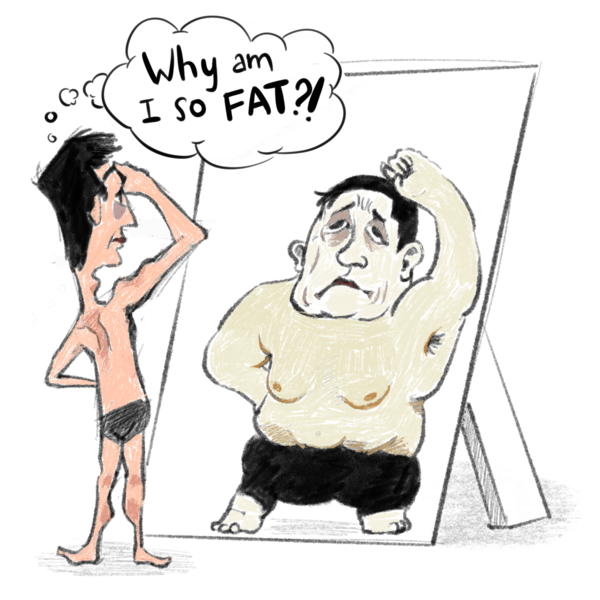Body image is a complex issue. It stems from inherent expectations from both within and outside of any social group one takes part in. Unfortunately, body image expectations are a double edged sword — they can be the last motivating push towards self-betterment, or an impossibly unattainable goal that turns motivation into an unhealthy detrimental obsession.

Body image standards traditionally affected the female sex much more. The first and second wave of feminism fought specifically against this objectification of female bodies, opposing things such as America’s Beauty Pageants. Despite being kerbed to a significant degree, there is still a societal push towards excessively skinny body images. But thankfully for the female sex, a reasonably attainable and maintainable body has been normalized, which can be seen with the increasing prevalence of “average physique” or “plus size” female models appearing in fashion shows and advertisements.
However, this has not extended as far to the male sex in the modern day. There were exactly no “plus size” models to be seen in the 2023 menswear fashion shows, nor are they common on social media. Society’s body image expectation of men is largely traditional — to be fit and physically strong. Personally, I’m all for this — I think it’s a disappointment to go through life without at least once discovering one’s full physical capabilities and strength. However, also understanding that a regular body image is not what is portrayed on social media by fitness models is key to men having a healthy relationship with their body image.
Unfortunately, the exposure to unrealistic body image expectations have exponentially increased in the age of social media. It is near impossible to traverse through social media without being exposed to some form of fitness inspiration posts. Arguably, the intent behind it is good — they’re supposed to show what is possible through hard work, dedication, and focus toward a goal. However, the reality is that these goals are effectively impossible to attain for the majority of people. What ends up happening is people living their daily lives, whether they be students or regular salary-earners, aim to reach the body standard of someone whose entire career revolves around maintaining their physique. At KAIST, we don’t expect people studying physics to have the same grasp of molecular biology as those in the Department of Biological Sciences. In that same sense, why is it acceptable to promote bodybuilders’ physiques as a goal to those who don’t have a career in bodybuilding?
Consequently, we do see quite a bit of overcorrection to these body image expectations. Terms such as “fatphobic” have risen in use on social media to antagonistically target people who have fitness routines as a part of their lifestyle. These terms range from encouraging acceptance of the presence of unavoidable and acceptable body fat, all the way to encouraging obesity to the point of severe health risk. This originates from two main areas: the perception that people use terms such as “fat” in a derogatory sense, and from feeling excluded. The key misunderstanding here is the difference between “disrespect” and “not respecting”. The perceived respect between those who are seemingly obsessed with exercise is because of a mutual understanding of the dedication, effort, and consistency to achieve and maintain certain physiques. This doesn’t result in an intentional “disrespect” of those who do not share this value, despite what some people may think. Simply put, respect for something cannot be given when that something is not being done. It is not demeaning or derogatory, it is simply absent. Overcorrection turns the societal issue of unrealistic body image expectations into a serious health issue. In fact, I think overcorrection of ambitious body image expectations is more detrimental than the problem it is trying to fix. Even in the worst case — an obsession over physical fitness, you acquire something good — a good body. Absolutely nothing beneficial is gained by promoting an unhealthy body image.
A balance needs to be found between these two extremes. Encouraging fitness and a nice body image is as good as normalizing healthy amounts of body fat. People’s physiques are dynamic and change depending on the circumstances they are in. What isn’t acceptable is when there is an imbalance to either side to the point of detriment to one’s health. There is no simple solution to this, as those who have always been fit due to their lifestyle and efforts will never understand the struggles of those who have never exercised or have a mental barrier to exercise, and vice versa. The ideal is to have a clear spectrum from “healthy” to “not healthy” rather than fit to unfit, and for the social norm to become accepting of honest dialogue that allows criticism and encourages healthy life choices, rather than having to dance around politically correct dialogue.

